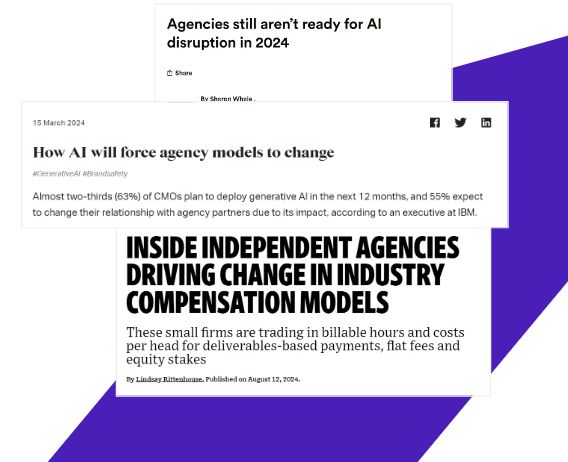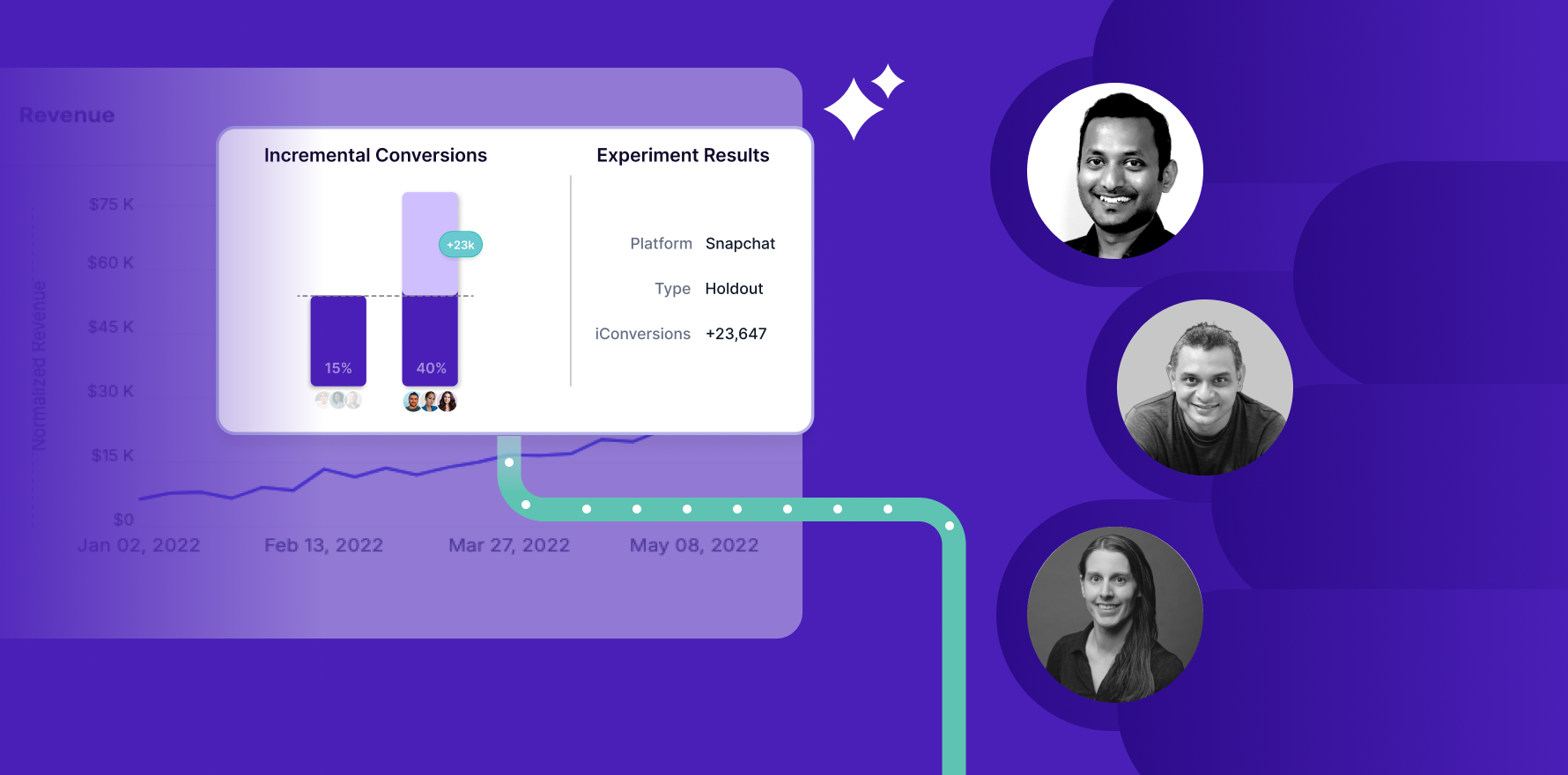As a marketing agency, you’ve likely asked by your clients, “Can you prove how your campaigns are driving our revenue?” With tighter budgets, rising client expectations, and evolving privacy regulations, the pressure to demonstrate measurable returns has never been higher. Gone are the days when relying solely on last-click attribution or platform-based reports was enough to showcase success.
Today’s marketing landscape demands a more comprehensive approach. Traditional measurement methods often miss the mark, leaving agencies with an effectiveness gap. So, how do you know if your strategies truly drive incremental growth? The answer lies in upgrading your measurement tool stack to focus on modern techniques like marketing mix modeling (MMM), incrementality testing, and causal attribution.
In this blog, we’ll explore why updating your agency’s measurement tools is critical to closing the effectiveness gap, proving ROI, and driving long-term growth. Ready to discover how? Let’s dive in.
Challenges Faced by Agencies In The Age of AI
Brands are navigating an increasingly challenging landscape, facing funding constraints and rising customer acquisition costs. Meanwhile, agencies encounter their own headwinds as shifting dynamics disrupt traditional business models.

- Traditional Services are Disrupted: With AI-driven tools automating tasks like media buying, content creation, and optimization, agencies find their core services increasingly commoditized. The use of specialized tools like recruiting software platforms highlights how automation is reshaping industries beyond marketing, offering both opportunities and challenges for growth.
- Diminishing Revenue Streams: As automation tools reduce the reliance on human-driven services, agencies struggle to maintain traditional revenue streams and profitability.
- Higher Client Expectations: Clients expect deeper insights and greater accountability, demanding measurable outcomes tied directly to business results, not just surface-level marketing metrics.
- Difficulty Proving ROI: As privacy regulations (e.g., GDPR, ATT) limit data access, traditional attribution models no longer suffice. Agencies face challenges in proving the real, incremental value of campaigns to clients without sophisticated measurement tools.
- Poor Campaign Performance: Without modern, AI-enhanced measurement methods like MMM and incrementality testing, agencies find it difficult to optimize campaign performance effectively, putting them at a competitive disadvantage.
These challenges highlight the urgency for agencies to embrace advanced, incrementality-driven measurement solutions that offer clear ROI, attribution accuracy, and strategic insights to remain competitive in the face of disruption.
How has the demand for data-driven decisions from your clients changed in the past year? Are clients increasingly prioritizing marketing measurement and accountability?
Absolutely. Most clients have significantly increased their focus on data-driven decisions, prioritizing media metrics that are closely aligned with business outcomes. There’s a growing emphasis on accountability, and clients are now more invested in maximizing their spending behind metrics that directly contribute to tangible business results.
– Mani Marimuthu || Head of Digital at Joy
How Can Agencies Prove Value?
Proving value goes beyond reporting vanity metrics like clicks or impressions. Agencies must demonstrate incrementality, showing which marketing efforts are truly driving new growth rather than just capturing existing demand.
Here’s how agencies can prove value effectively:
- Measure Incrementality: By focusing on incrementality, agencies can identify which campaigns, channels, or tactics are driving real, new sales or conversions. This provides clear proof of where marketing dollars are having the greatest impact.
- Leverage Unified Measurement Tools: The Unified Marketing Measurement combines MMM, incrementality testing, and causal attributions, allowing agencies to understand how each channel contributes to the overall marketing mix. These tools help isolate the true impact of each channel, providing transparency and actionable insights that traditional models miss. You can check Lifesight’s Unified Marketing Measurement Platform to find the true impact of every channel and its campaigns.
- Move Beyond Last-Click Attribution: Many agencies still rely on last-click attribution, which oversimplifies the customer journey. By adopting more sophisticated models, agencies can show the full funnel impact and better justify their budget allocations.
- Continuous Optimization: Proving value isn’t a one-time effort. With the right measurement tools, agencies can continuously optimize their campaigns, reallocating spending to high-performing channels in real-time. This maximizes ROI and instills client confidence in the agency’s ability to drive sustained growth.
How do you currently measure the success of your client’s marketing campaigns?
We collaborate with clients’ agencies to integrate cost data into analytics tools, connecting it with user behavior beyond impressions and clicks. This helps us track broader impacts like retention and personalization opportunities. However, we need a more holistic view to measure budget impact fully, combining standard metrics with zero-party data, like surveys and session behavior. This would give a clearer picture of ROI and campaign performance.
-Taylor (Guyette) Cruz || Senior Consultant at BlastX
By focusing on incrementality and utilizing advanced measurement models, agencies can demonstrate their contributions to their client’s bottom lines, ensuring their role as trusted and strategic partners.
Next-Gen Measurement – Triangulating the Measurement Methods
How do you currently measure the success of your client’s marketing campaigns?
We primarily measure ROI and compare it against benchmarks to gauge success. However, getting real-time insights is challenging when metrics depend on third parties like e-commerce marketplaces. This reliance on manual data limits timeliness and accuracy, making tracking campaign performance across all tactics difficult. More automated, real-time tracking solutions would greatly improve our ability to show budget impact.
–Madan Sanglikar || Co-Founder & Director at Switch Digital
The new measurement framework involves combining advanced tools like MMM, incrementality testing, and causal attribution to create a comprehensive, accurate measurement strategy. These methods work in tandem to solve the limitations of traditional measurement techniques like last-click attribution, which often oversimplifies performance analysis.
MMM provides a macro-level view by using historical data to assess the impact of various marketing channels, both online and offline. This approach is essential for businesses to understand the overall performance across all touchpoints, especially those that don’t generate direct conversions, such as brand awareness campaigns or TV ads.
Incrementality testing helps pinpoint the exact contribution of a specific channel or campaign, measuring true lift versus capturing demand that would have occurred regardless of marketing efforts. This test is critical for evaluating the actual incremental impact and is often applied through split geo-experiments or randomized control trials.
Finally, causal attribution goes beyond correlation by identifying cause-and-effect relationships. It adjusts and calibrates insights based on incrementality results, enabling businesses to optimize campaigns in real-time. This triangulated approach blends precision, practicality, and scalability, ensuring that marketers can confidently allocate budget and optimize performance across all channels, while navigating new privacy regulations and diminishing reliance on user-level data.
By leveraging these tools together, agencies and businesses can move toward more holistic, data-driven measurement frameworks, unlocking deeper insights and maximizing ROI.
MMM vs. Incrementality Testing vs. Causal Attribution
| Parameters | MMM | Incrementality Testing | Causal Attribution |
|---|---|---|---|
| Ability to Assess Causality | Partially, through modeling | Most rigorous | Partially, through calibration |
| Sales Scope | All first-party sales | User-based (digital conversion tracking) or Geo-based (all sales) | Digital conversion tracking |
| Channel Scope | All channels and tactics | It depends on the test, however, time testing is feasible for all channels | Digital only |
| Media Impact Timeframe | Mid-term (usually two years) | Short-term (test duration) | Short-term (usually 30 days) |
| Output Metric | MMM ROAS / MMM CPA (accounts for incrementality) | Incremental iROAS / iCPA | Calibrated ROAS/CPA |
| Decisions | Strategic | Strategic/Tactical | Tactical |
| Pros | • Measures both online and offline channels • Accounts for incrementality • Privacy-safe (aggregated data) • Better suited for scenario planning and forecasting |
• Most accurate method • Measures incrementality • Privacy-safe (aggregated data) |
• Provides granular insights • Offers near real-time insights |
| Cons | • Requires extensive historical data • Not granular • Quasi-Causal, Accuracy depends on input data • New channels, Sparse channels can’t be measured with confidence. |
• Geo tests don’t work for all countries • Expensive and Time-consuming• It is difficult to control for all the confounding variables and factors |
• Limited to digital channels • Tracking all touch points with 100% certainty is impossible. Missing data will need to be modeled for using algorithmic / dda models. |
Final Thoughts
How do you see agency marketing measurement evolving over the next 1-2 years, and how could this impact client retention or acquisition?
Marketing measurement is shifting toward solutions that provide deep insights without relying on user-level data. As privacy regulations tighten, agencies need to embrace predictive analytics and aggregated reporting for accurate performance tracking. Those who adopt creative, data-driven methods and leverage AI tools will stand out. Clients will increasingly seek partners who align campaign outcomes with business goals, making the ability to demonstrate measurable value a key driver of client retention and acquisition.
–Lital Castel || Content & Email Marketing at Moburst
Agencies must embrace modern measurement methods to remain competitive and demonstrate their value. The days of relying solely on last-click attribution or surface-level metrics are over. To drive growth, agencies need to adopt unified marketing measurement tools like Lifesight, combining MMM, incrementality testing, and causal attribution. These tools provide a comprehensive view of performance across channels, enabling data-driven decisions that prove ROI and maximize client success. In doing so, agencies can build stronger client relationships and ensure sustainable, long-term growth.
You may also like
Essential resources for your success

























































